Klein Karoo Itinerary: The Best 3-Day Adventure

There’s no doubt about it:
The greatest way to experience any country, especially the striking South Africa, is by taking a road trip.
And a journey through the Klein Karoo region, exploring the highs and lows of the majestic Swartberg Mountains, driving through the cute little towns with enthralling architecture, meeting the friendly people living there, and devouring delectable wines and steaks will make your vacation truly unforgettable.
But wait – you don’t know what the Karoo is?
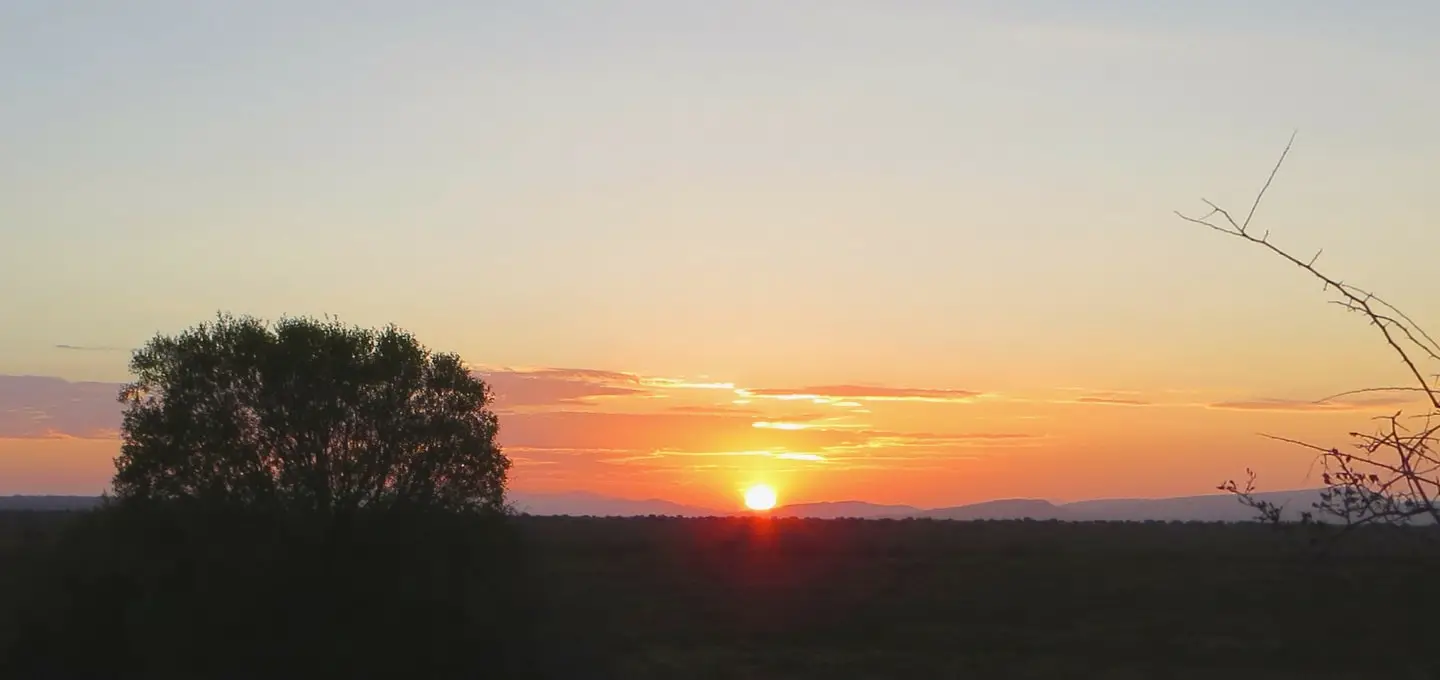
It is the South African semi-desert. The Swartberg Mountain Range divides it into two regions, the Great Karoo and the Little Karoo.
The Great Karoo stretches over the provinces of the Eastern, Northern, and Western Cape on more than 400,000 km2. That’s approximately the size of California and larger than the area of Germany!
The Klein Karoo (Little Karoo) is situated between majestic mountains. To the south are the Outeniqua Mountains and the Swartberg Mountain Range is to the north. It also borders the famous Garden Route in the Western Cape.
So what is a semi-desert then?
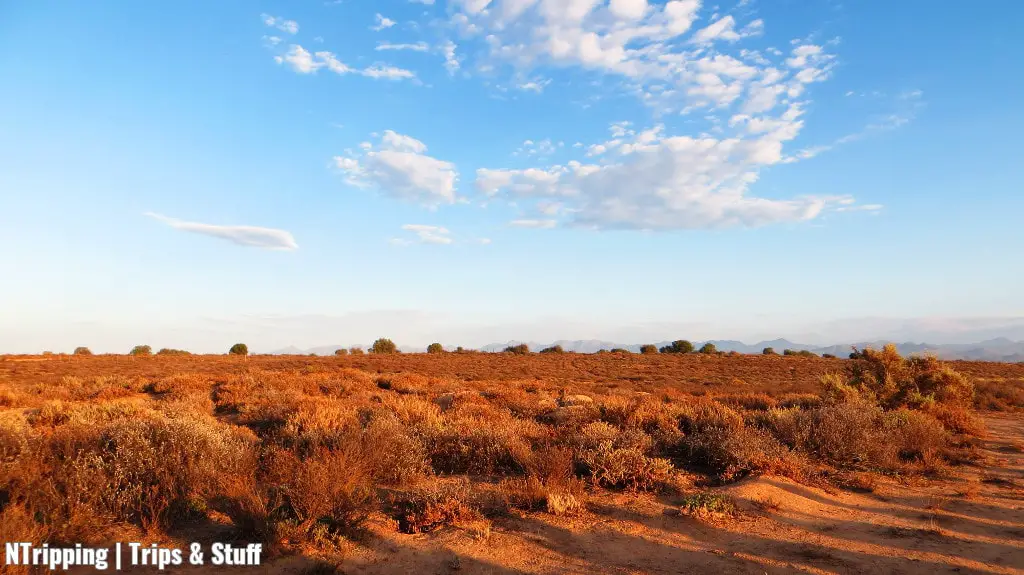
The rain, which falls in the semi-desert, is a bit more than in the desert, 50 – 250 mm/m2 per year. The air is arid and the temperature amplitudes are extreme.
Red clay soil covers the ground and every blow of the wind shoots clouds of red dust into the air during the dry season.
The plants, that cover the Klein Karoo, are low bush and grass. Plants, such as aloes, euphorbias, stapelias, and desert ephemerals, grow half a meter or more apart. The vegetation is sufficient to support vast herds.
In spring, when a few drops of rain eventually fall in the semi-desert, all the flowers and bushes blossom. For a brief period, the Klein Karoo is covered with a carpet of amazing, mesmerizing, beautiful thousands upon thousands of blooms.
Start Your Perfect Road Trip Through the Klein Karoo from Cape Town
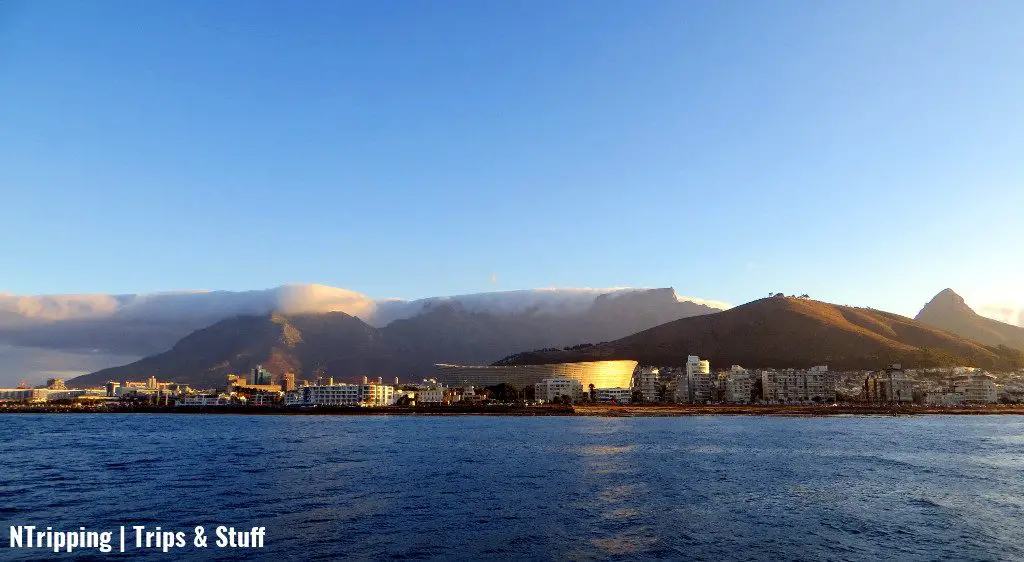
The best – and tested by yours truly – itinerary for a perfect adventure in the Klein Karoo starts in Cape Town and finishes at the Garden Route. Most people visit South Africa to explore exactly these two regions anyway. If your time allows it, find your own unique adventure and drive through the Klein Karoo as well.
The journey from Cape Town to Oudtshoorn, the largest town in the semi-desert, will take you parallel to the southern coastline, but you will be separated from the sea by the Outeniqua Mountain range.
Shortly after you leave Cape Town, you’ll pass by Paarl. From the highway, look out the window to see the only language monument in the world. The longest of its spires rises up 57 m (187 ft) high.
Eleven official languages are spoken in South Africa. The Language Monument in Paarl commemorates the Afrikaans language, which was written down in the city. It is a mixture of Dutch, English, German, French, and African languages with its own grammar rules.
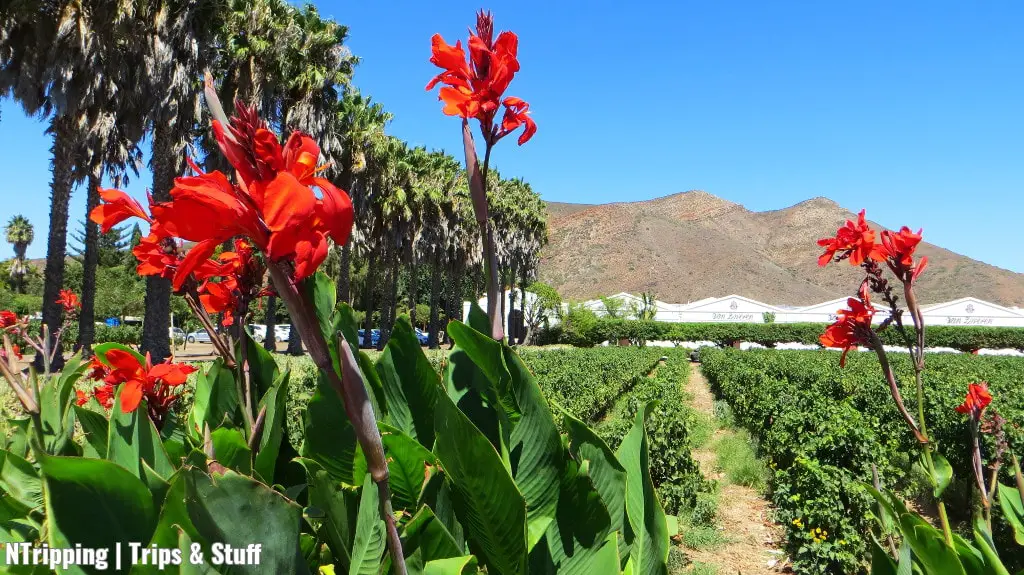
After you leave the highway, you’ll follow Route 62, known as the Wine Route. You will pass by numerous vineyards and orchards. Stop for a wine tasting along the way and enjoy the world-renowned South African wines. The family-friendly wine farms are a great choice.
My personal recommendation: try the chocolate pairing with specially crafted hand-made chocolates at Van Loveren Vineyards for an orgasmic experience.
Back on Route 62, you’ll pass by herds of ostriches and Karoo sheep. Make a stop for a lunch break and don’t miss to order a Karoo lamb dish. South Africans consider it the tastiest breed of lamb. But don’t just take their word for it and test it yourself!
Tip: check what other South African food classics you should try in the Klein Karoo.
Continue on Route 62 and deeper into the Klein Karoo. Stop at Ronnie’s Sex Shop in the middle of nowhere and leave a piece of underwear writing on the walls or on the ceiling.
Check into your accommodation in or around Oudtshoorn. Spend the night at one of the ostrich farms or at a charming guesthouse.
Time needed: depending on the number of stops and the length of the breaks you make, plan to be on the road for at least seven hours or, in other words, a whole day of epic road-tripping.
Greet the New Day in The Semi-desert with the Unpredictable Meerkats
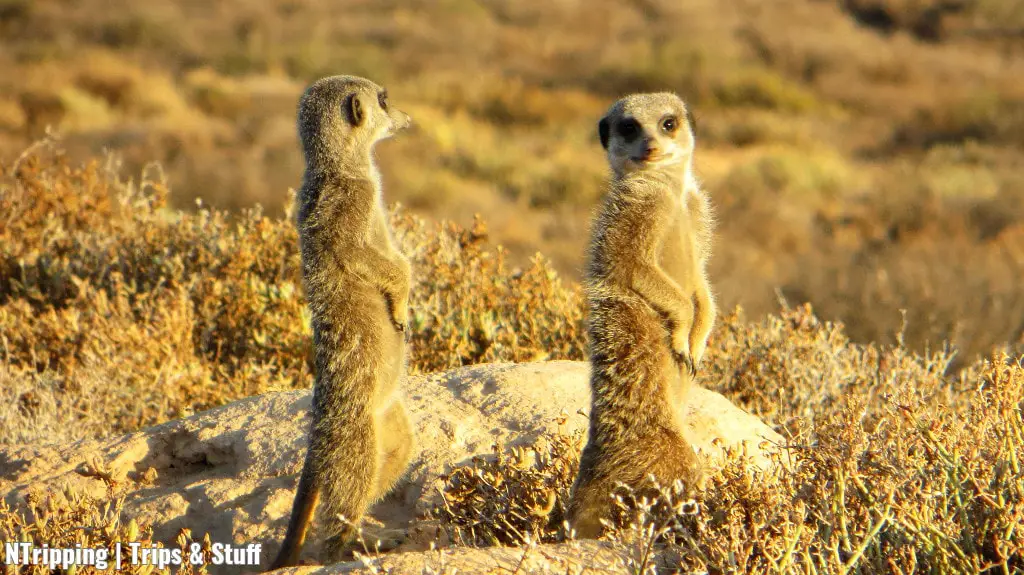
There are no Big Five safaris in the Klein Karoo but here is one of the few places in South Africa where you can say “Good morning!” to one of the Shy Five, the meerkats. They are the only African animals of the group, which are active during the day.
Wake up hours before sunrise. I know, I hate getting up early too, but it is all worth it. Go to the meeting point. Have a cup of coffee while listening to the guides’ instructions. Cross your fingers that the meerkats (or suricates) will be in a good mood this morning and will not keep you waiting for hours.
The little creatures’ peculiar habits are still not fully studied.
They might come out a moment after you’ve set your folding chair on the ground, or they might keep you waiting for hours. They might come out all at once, only to disappear in the distance a few moments later, leaving you with one blurry shot and a lot of disappointment.
But if you are as lucky as we were, you’ll only wait for a couple of minutes, just long enough for the guide to give you the instructions of how to behave in the presence of meerkats.
Then the little rodents will come out and gaze at the sun, enjoy the incredible pink colour of the first daylight, and completely ignore you. Afterwards, they’ll play with their mates long enough for you to take hundreds of pictures and even come within 2 m (6.5 ft) of your group!
Time needed: between two and six hours depending on the meerkats’ mood.
Tip: if you want to experience more stunning wildlife, check out these top African safari destinations.
Visit the Staggering Cango Caves, the Biggest Cave System in Africa
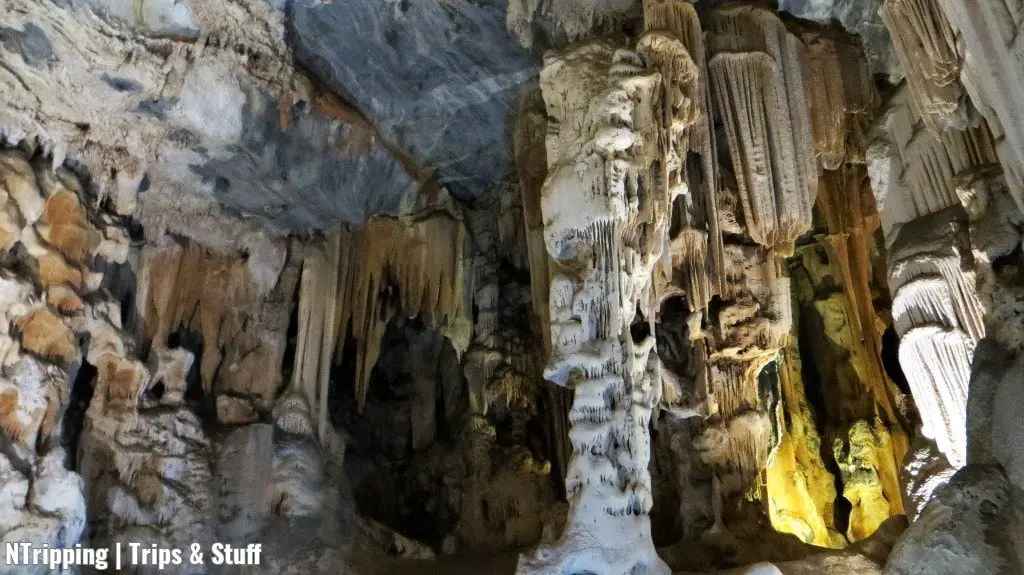
The Cango Caves at the foot of the Swartberg Mountain Range are the third most visited tourist attraction in South Africa (number one is the Kruger National Park and number two is the Table Mountain).
The caves are aged at about 20 million years. They comprise the biggest cave system in Africa. It consists of four caves but visitors can only enter the first one, called Cango I.
The Heritage Tour takes you through six out of all twenty-six chambers and lasts about an hour. Visitors, who take the Adventure Tour, see the same area but then their experience continues through further passages for another 30 min.
In the information center of the Cango Caves, you can see what tunnels and holes you’ll have to crawl through if you wish to join the Adventure Tour. Hint: the lowest passage is only 15 cm (6 in) high!
You can’t help but wonder how a limestone cave system formed under a semi-desert area. Of course, 20 million years ago this wasn’t a dry area but rather the bottom of the ocean. There’s no more water in the cave or in the area. Since it rarely rains, the Cango Caves are dry and growing at an extremely slow pace.
Still, nature had enough time to sculpt impressive stalactites and stalagmites and even connect some of those into magnificent columns, rising tens of meters high. It also formed striking flowstones and drapes which will leave you gazing in awe.
The first explorers found out that the Cango Caves were inhabited during the Stone Ages. Bushmen lived in the entrance hall. They never ventured deeper than a few meters inwards because they believed the spirits of their dead lived inside the cave and they didn’t want to disturb them.
Time needed: two to three hours.
Ride an Ostrich and Learn About the Most Lucrative Industry in the Klein Karoo
The largest town in the Klein Karoo, Oudtshoorn, is known as the Ostrich Capital of the World.
The ostriches from the Little Karoo are believed to be the prettiest members of their species. In the 1860s, a farmer successfully started domesticating, breeding, and hatching ostriches’ eggs in incubators without decreasing the beauty and quality of the feathers.
The feather industry boomed and ostrich farmers quickly became tremendously wealthy.
Nowadays, a visit to an ostrich farm is a must in the Klein Karoo.
Cuddle with the cute little ostrich chicks, covered in weirdly prickly feathers. Feed the always-hungry adult ostriches. Learn what type of ostrich feathers are used in the production of which souvenirs.
Try to stand on an ostrich egg. Don’t worry, you won’t break it. The 2 mm (0.08 in) thick shell is extremely strong and will hold your weight. Then ride on an ostrich, or watch the professionals do it.
Time needed: about two hours.
Stroll the Streets of Oudtshoorn, the Ostrich Capital of the World
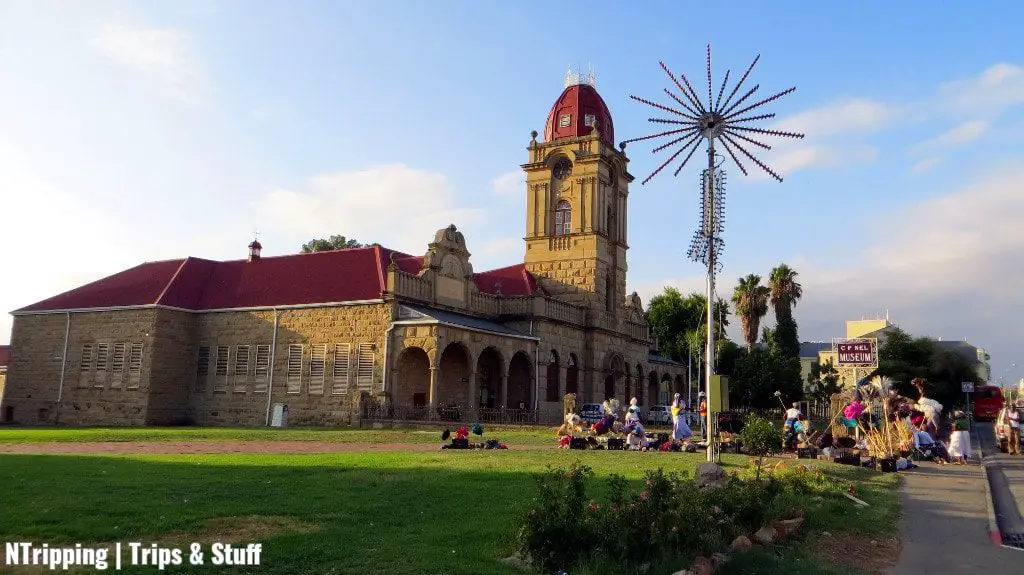
In the 1880s, the Klein Karoo, and especially the town of Oudtshoorn, became the center of the booming ostrich feather industry.
The wealthy farmers soon became known as Feather Millionaires. They built their grand Feather Palaces in Art Nouveau, Victorian, and Neo-Renaissance Revival styles using red rocks and sandstone.
Today, visitors can still admire the imposing mansions in Oudtshoorn. Stroll along Baron van Rheede Street to view some of the palaces. Don’t miss a visit to the C.P Nel Museum, showing a glimpse into the life of the Klein Karoo and especially the lifestyle of the people involved in the ostrich industry in its early days.
Many of the old houses were turned into charming guesthouses with cozy gardens and unique rooms or restaurants offering an exquisite gourmet experience. Don’t leave Oudtshoorn without devouring an assortment of scrumptious ostrich specialties.
Tip: if you travel to the lovely town at the end of March, you can also visit the Klein Karoo National Arts Festival, one of the best festivals in South Africa.
Time needed: two to four hours.
Drive Through the Stupendous Swartberg Pass for the Most Breathtaking Views
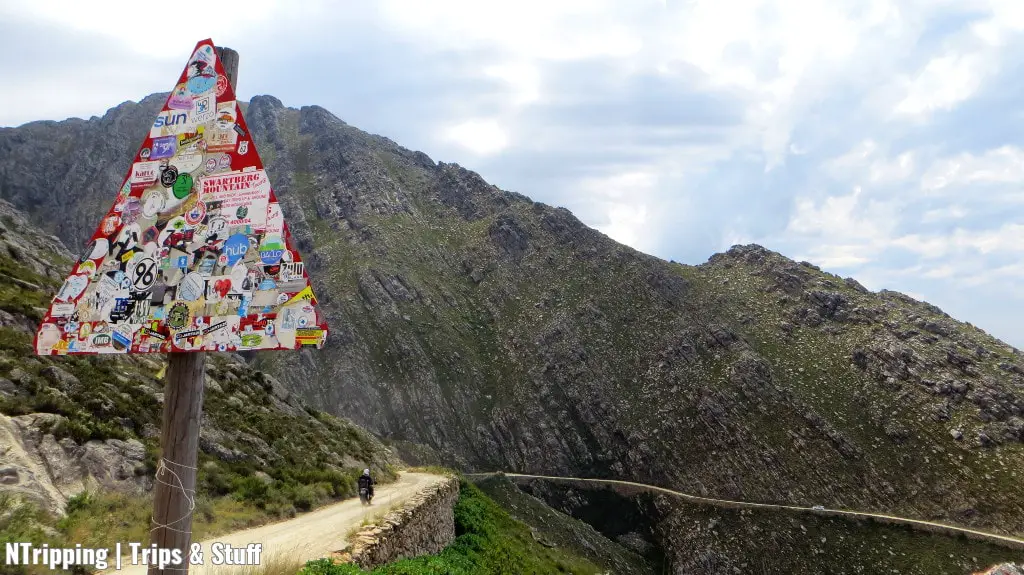
The Swartberg Mountain Range separates the Great Karoo from the Little Karoo. Thomas Bain built the pass through the mountains in the 1880s using convicts’ labor.
The main reason to build the Swartberg Pass was the need to provide a road connection between the town of Prince Albert in the Great Karoo and Oudtshoorn in the Klein Karoo, and from there to George on the Garden Route by the ocean.
The stunning views on each turn, the spectacular mountaintops on both sides of the road, and the winding gravel road make crossing the Swartberg Pass an incredible adventure even nowadays.
The pass closes several times a year due to poor weather conditions. The unpaved road can be treacherously slippery during rain. Snowfalls are not rare in winter.
Still, if you are lucky enough to cross it once, mark my word that it’s so bewildering, that you’ll want to drive it backward immediately just to get another chance to admire the awe-inspiring, jaw-dropping, magnificent views.
Time needed: between two and four hours depending on the number of stops, you make to photograph your stunning surroundings.
Leave the Klein Karoo with a Promise to Come Back and a New Adventure Ahead
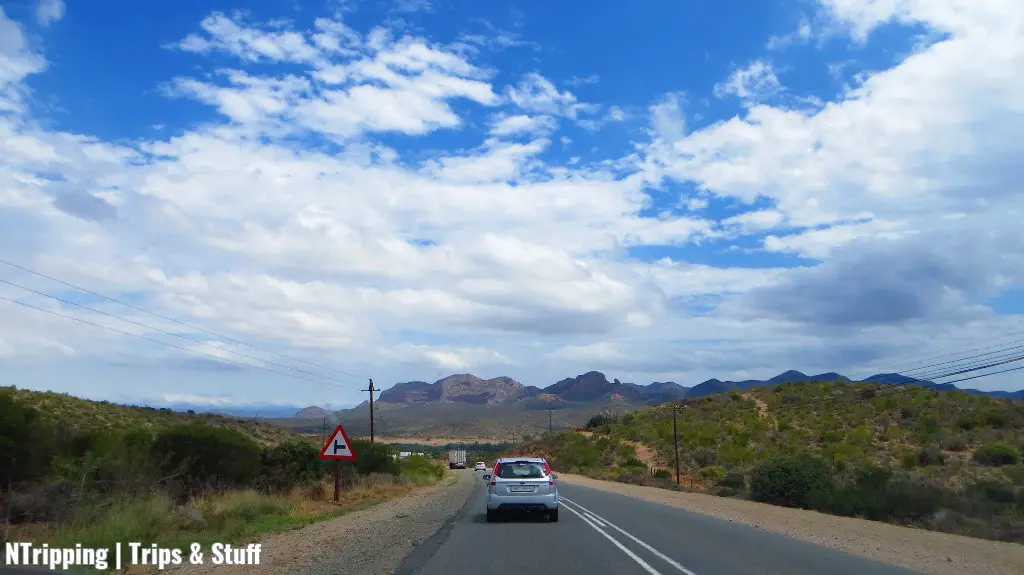
A great way to finish your perfect adventure in the Klein Karoo is driving through the Outeniqua Pass to reach the Garden Route. In its heart lies Knysna, which you should definitely explore next.
Tip: if you’re feeling fit for the challenge, why not cycle through the Klein Karoo instead of driving? Check out this itinerary through Tradow Pass, Barrydale, the Little Karoo, and the Seven Passes Road for ideas.
You will notice that the moment you reach the mountain, the weather, the vegetation, and the views will change suddenly and dramatically.
The semi-desert will disappear and the cooler, more humid air of the Garden Route will fill your lungs. Green tall trees will take the place of the low shrubs, and the ostrich and sheep herds along the road will disappear.
But an adventure through the South African semi-desert is an experience, which you can’t easily forget.
The delectable wines and the tender Karoo lamb on Route 62, the presence of ostriches everywhere you turn, the morning with the unpredictable little meerkats, the enormous chambers of the Cango Caves, the charming houses of Oudtshoorn, and the stunning views along the road through the Swartberg Pass will remain in your memories forever.
Do yourself a favor and promise to come back for another great adventure in the Little Karoo. And if you still haven’t visited, start packing your bags and booking your flight, because this surely is one of the best road trips you can ever take.
You can book this amazing road trip or any tailor-made tour through South Africa with Gecko Tours. We had a great time with them and I’m sure you will too!
One Comment